SUBJECTS
GRADE
Show Results
Creating a Character
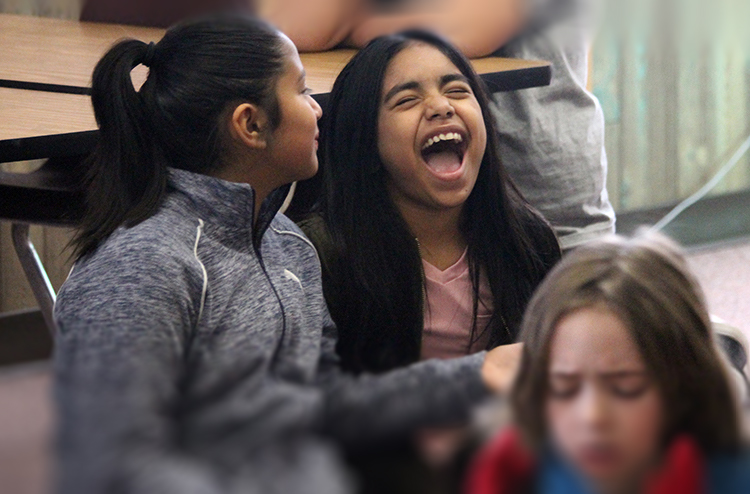
Lesson Summary
- Create original characters through movement exercises.
- Draw and describe an original character in detail.
Lesson Plan and Procedure
Lesson Key Facts
- Grade(s): 4, 5, 6
- Subject(s): Drama, English Language Arts
- Duration of lesson: 60 minutes
- Author(s): Haley Flanders
Note: If you split this lesson into two days, do the first two activities on the first day and the rest on the second day. Make sure you have enough materials and space for the students to move. This lesson will work best with an even number of students because you can group them into pairs. Additionally, it is helpful to have a bell, a shaker, or some other kind of noisemaker to ring when you want to give instructions during an exercise.
Warm-Up/Hook
Explain that theater is all about storytelling, with engaging and unique characters. In this lesson, students will be participating in many different movement exercises, culminating in a drawing project in which they will design their own original character.
Activity 1: Mirror Me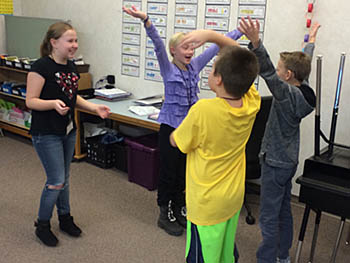
Have students partner up and label themselves “partner A” and “partner B.” While they are facing each other, invite partner A to move his or her body slowly, focusing on one body part at a time (for example, raising his or her right arm). Invite partner B to copy the movements, as if he or she were the mirror image of the partner (such as raising left arm at same speed). Have the partners engage in this mirroring activity for a few minutes, then have them switch roles.
Reflection
Engage the students in a reflective discussion by asking them questions, such as the following: What was hard about the mirroring activity? What was easy?
Emphasize that this exercise highlights the importance of physicality, as well as knowing how to follow and lead with a partner.
Activity 2: Human Clay
Have students keep their same partners from the previous activity. For this activity, invite partner A to be a sculptor and partner B to be the clay (allowing partner A to move partner B’s body while partner B stands still). Invite partner A to move partner B to fit a character in a following category: sports, cartoon characters, emotions, people of different ages (babies, kids, elderly), animals, and so on. After doing this for a few minutes, invite the students to switch roles so partner B molds partner A.
Engage the students in a reflective discussion by asking them questions. What was the experience like? What was hard? What was easy?
Emphasize that this exercise teaches the same principles as the first activity, but it also teaches them that actors often have to follow commands and allow themselves to be molded by their director in order to resemble other characters and things.
Activity 3: Fill the Empty Space
Organize the class into groups of three to four. Number each student in the group from one to three or four.
As you call out a number between one and four, the student in each group who is assigned that number will strike a pose. For example, when you say, “One, two, three, four,” student one strikes a pose. Then student two fills in the empty space somewhere around student one, adding to this silent, still story. Student three then goes. And lastly, student four adds the final pose. Together, they have made an expressive story.
Have the group members return to their original standing positions, or “go neutral.” Repeat the activity, only this time start the activity with the next number: “two, three, four, one.” Then have them go neutral and start with the next number (“three, four, one, two”), and then do the last combination (“four, one, two, three”).
Engage the students in a reflective discussion by asking them what that experience was like. What was hard about the activity? What was easy? Emphasize that this exercise teaches them to call and respond (not always going first, so sometimes having to respond to what someone else gives them) and to make characters through strong, bold choices, and then sticking to them!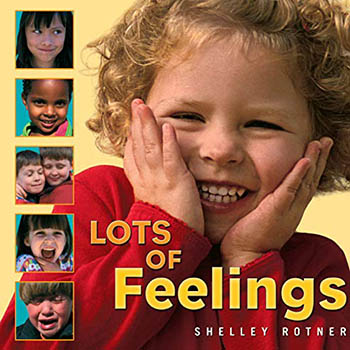
Instruction/Rehearsal
Have the students gather on the floor. Explain that much of acting comes from facial expressions.
Teacher: In theater, showing is better than telling. It's easy to come onstage and simply say, “I feel sad.” But it's more effective to start crying and say nothing.
Read the book Lots of Feelings by Shelley Rotner and, at the end of each page, have the students show the emotion described on the page with their faces and bodies. They can interact with the students next to them. Ask them what emotions they liked acting out and why.
Activity 4: Character Walk
Have the students stand for this solo activity. Have them walk around the room and give them instructions.
Teacher: We are going to first focus on the space around us. Walk as if your character takes up a lot of space and try to explain why through action.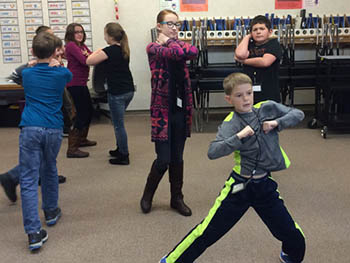
Give the students various directions, such as the following: frantically chasing or being chased, dancing like a ballerina, and so on.
Instruct the students to take up as little space as possible, like trying to walk through a crowded room, being shy, being cold, and so on.
Invite the students to lead their walk with different parts of their body jetting out and propelling them forward: elbows, knees, neck, hips, head, hands, feet, and such. This creates characters and changes entire personas and behaviors.
Activity/Performance
Gather the students together and hand each student a Create a Character template. Using their experience and ideas of characters they created during the movement exercises, invite the students to complete the template by drawing the head and face of an original character, and then have them fill in the following details about their character: name, age, where he or she lives, something he or she loves, something he or she does not like, and a scene premise for the character (for example, what does he or she want, do, or feel?).
Make a sample and share it with the class before you have them make their own. Remind students not to make a character who already exists: cartoon characters, real people, book or movie characters. Rather, encourage them to create their own character.
Conclusion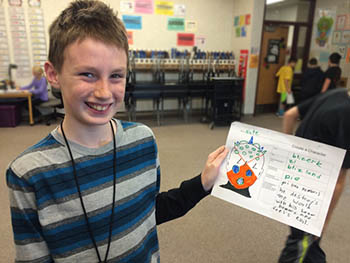
Have the students share their original character, either with the entire class or with a group of six to eight characters. Have them read what they wrote about their character and share their picture. Invite students to share how the movement exercises helped them come up with details for their character. If time allows, you could invite them to stand up, move, and talk like their original character.
Learning Objectives
- Establish a situation and characters that respond to actions.
- Use descriptions and concrete words.
- Develop personal imagination.
- Write and focus on the five w’s: who, what, where, when, and why.
- Define roles and work in a group.
- Communicate character and story through physical movement.
Utah State Board of Education Standards
This lesson can be used to meet standards in many grades and subject areas. We will highlight one grade’s standards to give an example of application.
Grade 4 English Language Arts
Standard 4.W.3: Write narrative pieces to develop real or imagined experiences or events using effective technique, descriptive details, clear event sequences, and provide a resolution.
- Orient the reader by establishing a situation and introducing a narrator and/or characters; organize an event sequence that unfolds naturally.
- Use dialogue and description to develop experiences and events or show the responses of characters to situations.
- Use a variety of transitional words and phrases to manage the sequence of events.
- Use concrete words, phrases, complex sentences, and sensory details to convey experiences and events precisely.
- Use appropriate conventions when writing including text cohesion, sentence structure, and phrasing.
Grade 4 Drama
- Standard 4.T.CR.1: Develop imagination to create artistic ideas and work.
- Standard 4.T.CR.3: Write or record simple dramas that include the five Ws of who, what, where, when, and why.
- Standard 4.T.CR.4: Define roles, identify responsibilities, and participate in group decision making.
- Standard 4.T.CR.5: Create character through imagination, physical movement, gesture, sound, speech, and/or facial expression.
- Standard 4.T.P.3: Observe, listen, and respond in character to other actors throughout a scripted or improvised scene.
- Standard 4.T.P.4: Communicate meaning using the body through space, shape, energy and gesture.
Equipment and Materials Needed
- Creating a Character template
- Rotner, Shelley. Lots of Feelings. Chicago: Wright Group/McGraw-Hill, 2011.
- Bell or other kind of noisemaker (optional)
- Coloring materials
- Colored pencils
- Markers
- Crayons
- Pencils
Additional Resources
Here are some other book options to show in addition to, or in place of Lots of Feelings:
- The Feelings Book by Todd Parr: https://www.amazon.com/ Feelings-Book-Todd-Parr/dp/ 0316012491
- The Way I Feel by Janan Cain: https://www.amazon.com/Way-I- Feel-Janan-Cain/dp/1884734715/ ref=pd_lpo_sbs_14_t_0?_ encoding=UTF8&psc=1&refRID= B6BWMR9TDKN74CV4Z9AY
- Today I Feel Silly: And Other Moods that Make My Day by Jamie Lee Curtis: https://www.amazon.com/Today- Feel-Silly-Other-Moods/dp/ 0060245603
Image References
Images 1–2: Haley Flanders.
Image 3: Lots of Feelings by Shelley Rotner (https://www.amazon.com/Feelings-Shelley-Rotners-Childhood-Paperback/dp/0761323775).
Images 4–5: Haley Flanders.

www.education.byu.edu/arts/lessons
 Download
Download